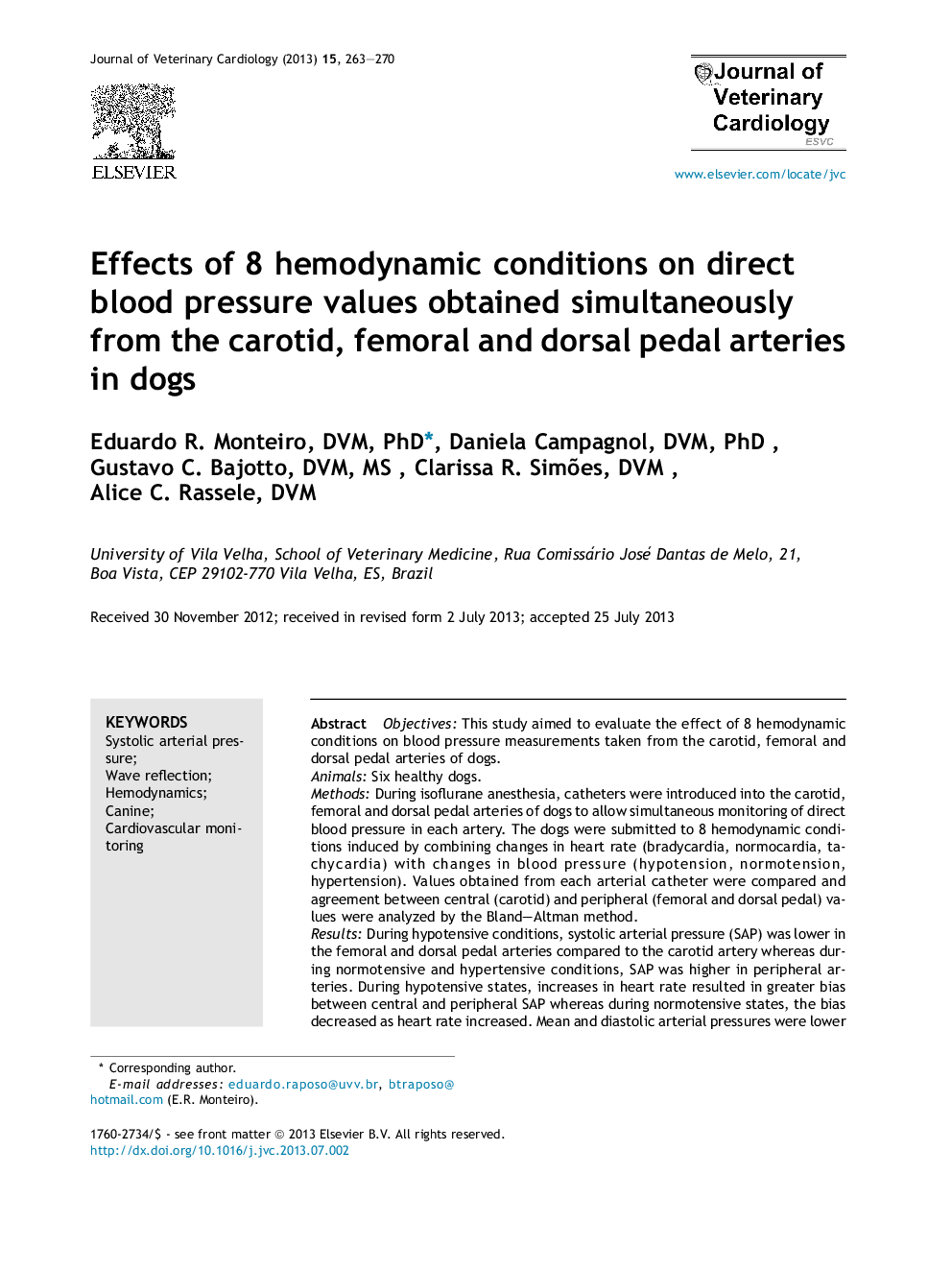| Article ID | Journal | Published Year | Pages | File Type |
|---|---|---|---|---|
| 2400231 | Journal of Veterinary Cardiology | 2013 | 8 Pages |
ObjectivesThis study aimed to evaluate the effect of 8 hemodynamic conditions on blood pressure measurements taken from the carotid, femoral and dorsal pedal arteries of dogs.AnimalsSix healthy dogs.MethodsDuring isoflurane anesthesia, catheters were introduced into the carotid, femoral and dorsal pedal arteries of dogs to allow simultaneous monitoring of direct blood pressure in each artery. The dogs were submitted to 8 hemodynamic conditions induced by combining changes in heart rate (bradycardia, normocardia, tachycardia) with changes in blood pressure (hypotension, normotension, hypertension). Values obtained from each arterial catheter were compared and agreement between central (carotid) and peripheral (femoral and dorsal pedal) values were analyzed by the Bland–Altman method.ResultsDuring hypotensive conditions, systolic arterial pressure (SAP) was lower in the femoral and dorsal pedal arteries compared to the carotid artery whereas during normotensive and hypertensive conditions, SAP was higher in peripheral arteries. During hypotensive states, increases in heart rate resulted in greater bias between central and peripheral SAP whereas during normotensive states, the bias decreased as heart rate increased. Mean and diastolic arterial pressures were lower in the femoral and dorsal pedal arteries than in the carotid artery during most hemodynamic conditions.ConclusionsIn healthy anesthetized dogs, invasive blood pressure measurements in peripheral arteries may differ significantly from measurements in a central artery. The greatest differences were observed in SAP and the magnitude of differences between central and peripheral blood pressure measurements varied according to the dog's hemodynamic condition.
